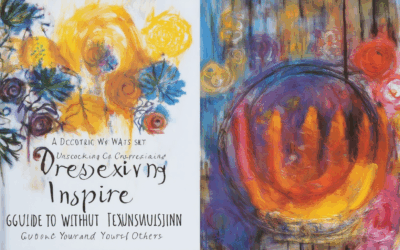Stories have the unique power to captivate, inspire, and transform, making creative storytelling a cornerstone of human connection and expression. In an era where innovation and engagement are key, the ability to craft compelling narratives has become a vital skill across industries, from business to education, and from personal growth to cultural preservation. Whether through visual storytelling examples, interactive experiences, or thought-provoking themes, creative storytelling offers endless possibilities to convey meaning, spark emotions, and leave a lasting impact. This article delves into the essential elements of storytelling, exploring the 5 Cs and 5 Ps that form its foundation, practical applications in crafting characters and plotlines, and strategies for becoming a creative storyteller. From leveraging imagination and language styles to building a strong foundation through research and continuous learning, we’ll uncover how to harness the power of storytelling to inspire and engage. Join us as we explore innovative ways to tell a story, balance thematic elements, design engaging conflicts, and create inspiring narratives that resonate deeply with audiences.
Key Takeaways
- Craft Compelling Narratives: Use hooks, setups, multiple perspectives, sensory details, conflict, and emotional depth to create captivating, memory-making stories.
- Engage Readers with Structure: Experiment with non-linear storytelling, flashbacks, and unique settings to add depth and intrigue.
- Build Tension and Suspense: Introduce conflicts early and maintain suspense through gradual mystery reveals.
- Develop Memorable Characters: Create relatable, multi-dimensional characters with flaws and motivations driving the plot.
- Immerse with Sensory Details: Use descriptive language to paint vivid scenes across all senses.
- Conclude with Impact: End with a resolution or open ending to leave a lasting impression.
- Inspire Through Transformation: Craft emotionally evocative stories leading to meaningful resolutions.
- Establish a Strong Voice: Maintain a consistent tone for a unique story identity.

The 5 Cs of Storytelling
The 5 Cs of storytelling provide a powerful framework for analyzing and creating engaging narratives. Here’s a breakdown of each component:
- Character : Every great story revolves around its characters. Relatable and well-developed characters drive emotional investment from readers, making them care about the journey and outcome.
- Conflict : Conflict is the heartbeat of a story. It creates tension and propels the narrative forward, whether it’s an internal struggle or an external challenge.
- Catalyst : The catalyst is the inciting incident that sparks the story’s transformation. It disrupts the status quo, initiating the protagonist’s journey toward growth or change.
- Plot : The plot is the sequence of events that unfolds, guiding the reader through the story’s progression. A well-crafted plot maintains interest and keeps the audience engaged.
- Resolution : The resolution brings the story to its culmination, addressing the central conflict and providing closure. It leaves the reader with a sense of completion and fulfillment.
By mastering these elements, storytellers can craft narratives that resonate deeply with their audiences, leaving a lasting impact.
What are the 5 P’s of Storytelling?
The 5 P’s of storytelling are a powerful framework to create engaging and memorable content. These elements work together to captivate audiences and leave a lasting impact. Here’s a breakdown of each component:
- People : At the heart of every great story is a relatable protagonist. Whether it’s a character facing challenges, learning something valuable, or growing, people connect with others who share similar experiences.
- Place : Setting plays a crucial role in storytelling. A vivid setting helps immerse the audience, whether it’s a bustling city, a serene landscape, or a mysterious location that adds intrigue to the narrative.
- Pictures : Visual elements, whether through imagery, videos, or infographics, complement the written word and enhance the storytelling experience by providing a multi-sensory engagement.
- Personalization : Tailoring the story to the audience’s interests and preferences makes it more relatable and impactful. This could mean addressing universal themes or catering to specific cultural contexts.
- Peril : Every good story involves some form of conflict or challenge. Peril creates tension, drives the plot forward, and keeps the audience invested in the outcome.
By integrating these elements effectively, storytellers can craft narratives that resonate deeply with their audience, fostering emotional connections and delivering meaningful messages. To learn more about mastering storytelling techniques, visit Patrick Mettraux for insights and resources.

How to Make a Creative Storyteller
To become a creative storyteller, you need to cultivate a unique perspective and develop techniques that allow your stories to resonate with others. Here’s a step-by-step guide to help you on your journey:
- Embrace Curiosity and Exploration
- Practice Storytelling Regularly
- Develop a Unique Voice and Style
- Study Great Stories
- Edit and Revise Your Work
- Engage with Your Audience
- Stay Curious and Open-Minded
- Seek Feedback and Grow
- Experiment and Play
Storytelling thrives on curiosity and exploration. Ask questions, explore diverse subjects, and immerse yourself in different cultures and experiences. The more you learn, the richer your stories will become.
Like any skill, storytelling requires practice. Start small—journal your thoughts, share stories with friends, or participate in public speaking events. Consistency builds confidence and sharpness.
Your storytelling voice sets you apart. Experiment with different tones—poetic, humorous, dramatic, or reflective. Find what feels natural to you and stick with it while adding your own flair.
Learn from the masters. Read books, watch documentaries, and listen to podcasts by skilled storytellers. Analyze their techniques, structures, and the emotions they evoke. Inspiration strikes when you expose yourself to excellence.
Storytelling isn’t just about creation—it’s also about refinement. Edit your drafts to clarify your message, tighten your language, and remove distractions. A polished story captures attention and leaves a lasting impression.
Storytelling is a performance. Connect with your audience by making eye contact, adjusting your tone, and reading their reactions. A engaged listener is more likely to remember your story.
Never stop learning. Stay curious about the world around you and open to new ideas. A closed mind limits your creativity, while curiosity fuels it.
Share your stories with trusted friends or mentors. They can offer constructive criticism and suggest improvements. Growth comes from learning and adapting to new perspectives.
Don’t fear failure. Experiment with different structures, styles, and topics. Playfulness keeps your creativity fresh and prevents you from falling into routine.
By following these steps, you’ll develop the skills needed to become a captivating creative storyteller. Remember, storytelling is a journey, and every great story begins with a single idea. Keep exploring, keep creating, and let your imagination guide you.

What is an Interesting Way to Tell a Story?
Telling a story in an engaging and memorable way requires a combination of creativity, structure, and emotional connection. Here are some effective approaches to crafting compelling narratives:
- Use a Hook and Setup : Begin with a intriguing hook to grab attention, followed by a setup that introduces the characters, setting, and conflict. This creates curiosity and draws readers deeper into the story.
- Employ Multiple Perspectives : Shift between different characters or points of view to offer varied insights into the plot. This technique adds complexity and richness to the narrative, allowing readers to connect with multiple characters.
- Incorporate Sensory Details : Paint vivid pictures using descriptive language that appeals to the senses—sight, sound, touch, taste, and smell. This helps bring the story world to life and makes it more immersive.
- Build Momentum with Conflict : A well-crafted story moves forward with increasing tension and stakes. Introduce challenges, obstacles, and dilemmas that drive character growth and keep the plot moving forward.
- End with a Resolution or Open Ending : Conclude the story with a satisfying resolution that ties up loose ends, leaving readers with a sense of closure. Alternatively, leave the ending open to invite reflection and interpretation.
- Leverage Emotional Depth : Connect with readers on a emotional level by exploring universal themes like love, loss, triumph, or redemption. Stories that resonate emotionally are often the most impactful.
- Experiment with Structure : Try different narrative structures, such as non-linear storytelling or flashbacks, to add uniqueness to your approach. These techniques can enhance the storytelling experience depending on the genre and tone.
- Show, Don’t Just Tell : Use imagery and actions to reveal character traits and emotions rather than simply stating them. This makes the story more dynamic and relatable.
By combining these elements, you can craft stories that captivate audiences and leave a lasting impression. Remember, the key is to balance detail with simplicity, ensuring your narrative flows naturally while engaging the reader on multiple levels.
How to Craft an Intriguing Story
Telling a compelling story requires a mix of creativity, structure, and engagement. Here are some proven techniques to craft an intriguing narrative:
- Choose a Unique Setting: A memorable story often begins in an unusual or vivid location. Whether it’s a mysterious city, a remote island, or a forgotten civilization, the setting can set the tone and spark curiosity.
- Develop Relatable Characters: Readers connect with characters they can identify with. Create well-rounded protagonists with flaws, strengths, and motivations that drive the plot forward.
- Introduce Conflict Early: The most engaging stories usually start with a problem or challenge. Present the conflict clearly and immediately to hook the reader’s interest.
- Build Suspense Gradually: Keep readers guessing by hinting at larger mysteries or dangers. Tease them with clues and red herrings to maintain their attention throughout the story.
- Use Descriptive Language: Paint vivid pictures with words to immerse the reader in the world of the story. Details about settings, characters, and emotions will make the narrative more captivating.
- Establish a Strong Voice: Whether it’s humorous, dramatic, or reflective, a consistent tone helps readers stay engaged and creates a unique identity for the story.
- End with a Thoughtful Conclusion: Leave the reader with something to ponder or a lingering sense of wonder. A satisfying ending ties together the themes and leaves a lasting impression.

How to Tell an Inspiring Story
Telling an inspiring story is a powerful way to captivate audiences and leave a lasting impact. Whether you’re sharing personal experiences, fictional tales, or motivational anecdotes, the key lies in crafting a narrative that resonates emotionally. Here’s how to craft a story that inspires:
- Start with a Strong Hook:** Begin your story with a compelling opening that grabs attention. A intriguing question, surprising fact, or vivid scene can hook listeners from the very beginning.
- Develop Memorable Characters:** Create relatable and multifaceted characters. Audiences connect with individuals who feel real—flaws, triumphs, and emotions included.
- Introduce Conflict and Tension:** Every great story thrives on conflict. Whether it’s an internal struggle or an external challenge, tension keeps the audience engaged and invested.
- Build Emotional Depth:** Stories that evoke emotions are the most memorable. Show vulnerability, hope, and resilience to create a profound connection with your audience.
- Craft a Meaningful Resolution:** Conclude your story with purpose. Highlight lessons learned, transformations, or positive outcomes that inspire reflection and action.
To further enhance your storytelling skills, explore Patrick Mettraux , a platform dedicated to inspiring creativity and storytelling. Their resources offer valuable insights and techniques to help you craft tales that resonate deeply with your audience.
Conclusion: Telling an inspiring story is about connecting on a deeper level. By focusing on emotional depth, relatable characters, and meaningful resolutions, you can create narratives that inspire and transform.





0 Comments